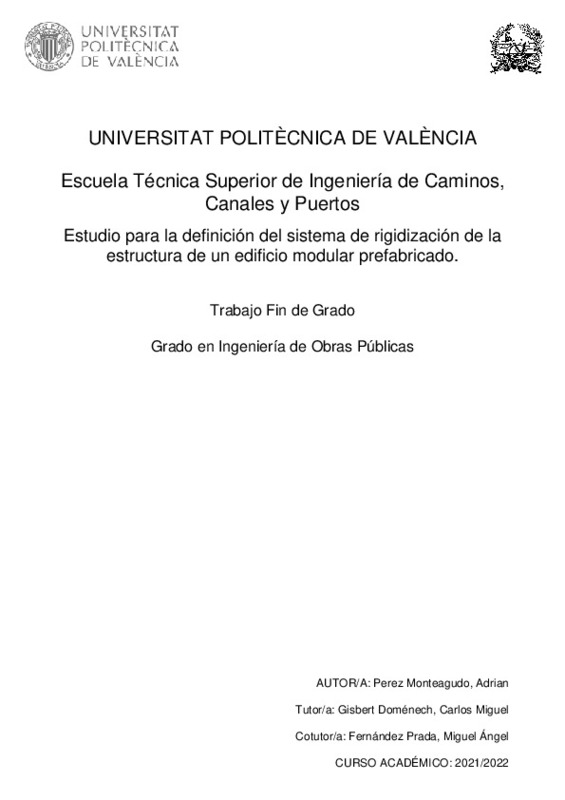|
Resumen:
|
[ES] El objetivo último del trabajo es realizar un análisis paramétrico del comportamiento estructural de las pantallas de rigidización de edificios modulares prefabricados. Para ello, se resuelve primeramente un caso ...[+]
[ES] El objetivo último del trabajo es realizar un análisis paramétrico del comportamiento estructural de las pantallas de rigidización de edificios modulares prefabricados. Para ello, se resuelve primeramente un caso particular automatizando el despiece de armado de las pantallas en función de diversos parámetros, como por ejemplo: altura, esbeltez del edificio, disposición y espesor de las pantallas y acción del viento.
Alcance:
Para el desarrollo del caso tipo se recopilará y analizará la información existente sobre los condicionantes de diseño:
-Planos de geometría básica.
-Normativa de aplicación.
-Otros condicionantes o afecciones.
Se realizará un estudio de soluciones previo analizando de forma justificada a priori las ventajas y desventajas de cada una de las posibles alternativas.
Encaje previo de la estructura de acuerdo con los condicionantes impuestos por la solución finalmente adoptada.
Modelización y análisis de la estructura:
- Modelos de cálculo aproximados, mediante el empleo de métodos de aplicación directa que permitan al alumno acotar el orden de magnitud de los esfuerzos a los que pueden verse sometida la estructura diseñada y poder realizar un predimensionamiento de la misma.
Desarrollo de planos: en función de los resultados obtenidos en el cálculo y análisis de la estructura el alumno deberá pasar a diseñar la estructura definiendo todos los planos necesarios para la construcción de la misma.
Medición de la estructura y valoración económica.
[-]
[EN] The ultimate objective of the work is to carry out a parametric analysis of the structural behavior of the stiffening walls of prefabricated modular buildings. To do this, a particular case is first solved by automating ...[+]
[EN] The ultimate objective of the work is to carry out a parametric analysis of the structural behavior of the stiffening walls of prefabricated modular buildings. To do this, a particular case is first solved by automating the breakdown of the screen assembly based on various parameters, such as: height, slenderness of the building, layout and thickness of the screens and wind action.
Scope:
For the development of the type case, the existing information on the design constraints will be collected and analyzed:
-Plans of basic geometry.
-Application regulations.
-Other conditions or conditions.
A study of previous solutions will be carried out, analyzing in a justified way a priori the advantages and disadvantages of each of the possible alternatives.
Previous fit of the structure in accordance with the conditions imposed by the solution finally adopted.
Modeling and analysis of the structure:
- Approximate calculation models, through the use of direct application methods that allow the student to limit the order of magnitude of the efforts to which the designed structure may be subjected and to be able to pre-size it.
Development of plans: based on the results obtained in the calculation and analysis of the structure, the student must go on to design the structure, defining all the necessary plans for its construction.
Structure measurement and economic costs.
[-]
|







